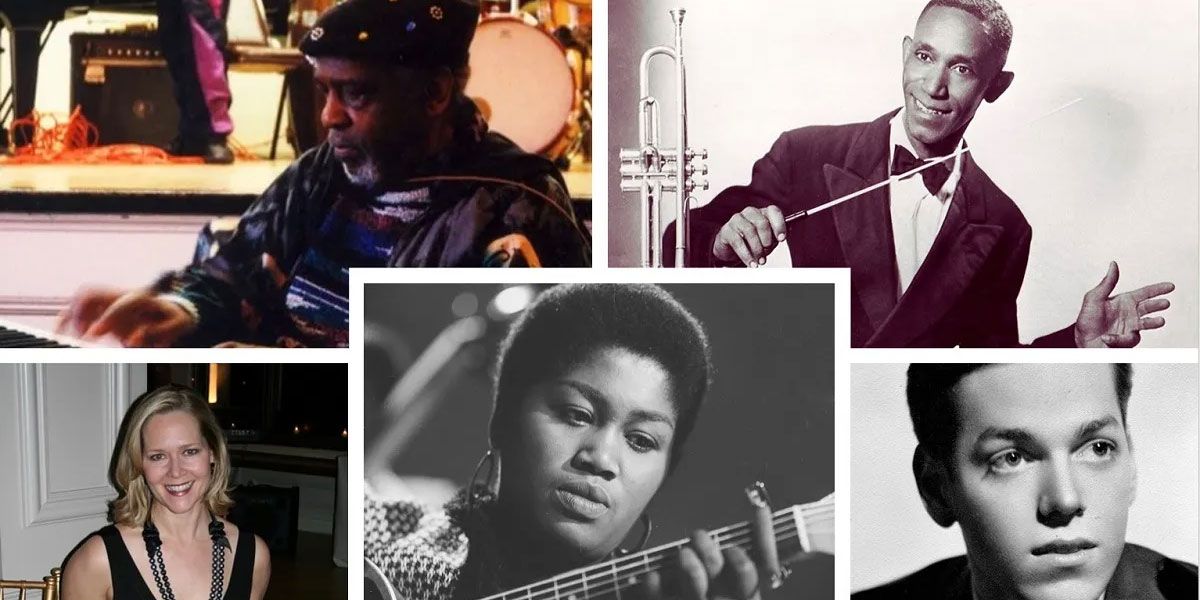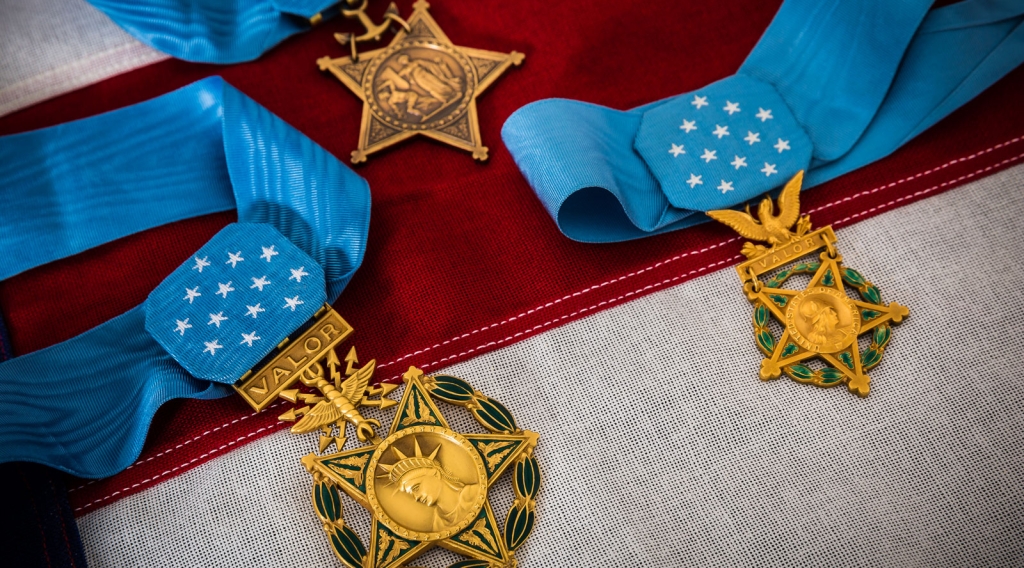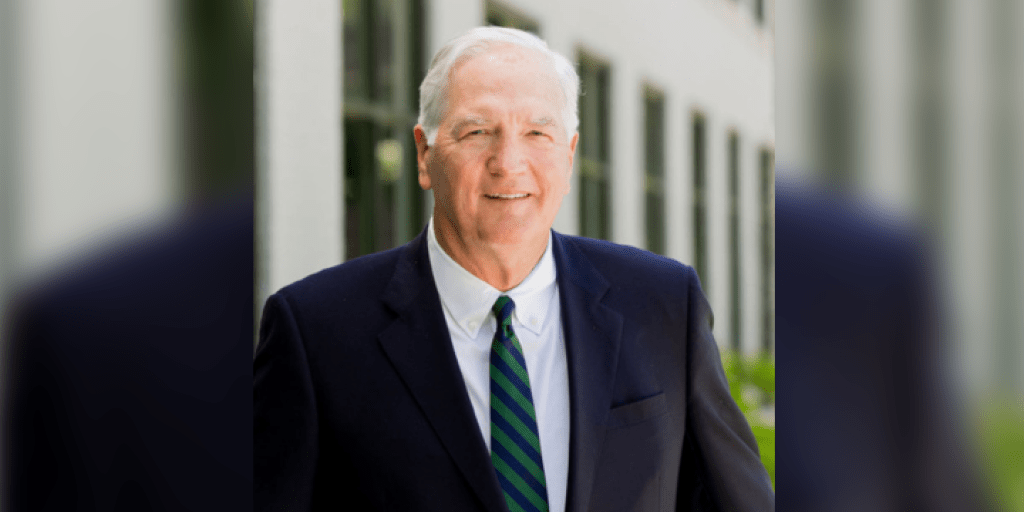Alabama NewsCenter is closing out Birmingham’s 150th birthday with a sonic bang, delving deep into the musical history of the Magic City.
Rebecca Luker
Rebecca Luker (1961-2020) was born in Birmingham and grew up in Helena. She sang in the choir at First Baptist Church of Alabaster and played in the Thompson High School Marching Band.
Luker won a college scholarship as Alabama Junior Miss runner-up and in 1984 graduated from the University of Montevallo. After reaching Broadway, she starred from 1989-1991 in “The Phantom of the Opera” in New York City.
Luker would have starring roles in plays for three decades, earning three Tony Award nominations and critical acclaim for many other performances before her death from Lou Gehrig’s disease.
“I am so not a musical theater person,” she told Playbill in 2003. “I love rock music and jazz. I love the ’70s stuff I grew up with.”
Luker received her first Tony nomination in 1994 for “Show Boat” in which she played Magnolia. Her second nomination was in 2000 for “The Music Man,” playing Marian. The third Tony nomination was in 2006 for best featured actress in a musical for her role as Winifred Banks in “Mary Poppins.” She played in Show Boat 1994-1997, Music Man 2000-2001 and Poppins 2006-2010.
Luker also appeared on Broadway in “The Secret Garden” 1991-1993, “Nine” in 2003, “Rodgers and Hammerstein’s Cinderella” 2013-2014 and “Fun Home” in 2016. In addition to Tony Award nominations, she was twice nominated for a Drama Desk Award and three times for an Outer Critics Circle Award. She won a Drama-Logue Award for her 1997 performance in “Harmony” and took a Bistro Award in 2007 for her solo cabaret work at Feinstein’s/54 Below.
Luker made 18 appearances in other plays, performing everywhere from Carnegie Hall to the Kennedy Center to the New York City Opera.
Her talents extended on screen, with roles between 1997 and 2020 on television and in movies, ranging from “Law & Order: Special Victims Unit” to a recurring 2012 role as Sister Agnes on “Boardwalk Empire.” She had a voice role in the 1997 video “Beauty and the Beast: The Enchanted Christmas.” Her last feature film was “Not Fade Away,” a drama about a teenage rock band.
Luker was part of more than 20 cast recordings, such as “Annie Get Your Gun” in 1991 and “Brigadoon” in 1992, both on EMI Records. She was featured on nearly 40 other albums, including “My Favorite Broadway: The Love Songs” in 2001, and recorded four solo albums between 1996 and 2013.
She was frequently praised in The New York Times. In an interview with that newspaper, Luker professed a love for “the live experience in front of an orchestra.” One of her featured performances with the New York City Opera was in “X – The Life and Times of Malcolm X.”
Her final stage role was in the 2019 production of “Footloose” at the Kennedy Center. She also performed there in a concert honoring Sheldon Harnick in March 2020.
In June 2020, via Zoom, she sang for the last time in a prerecorded benefit performance, “At Home With Rebecca Luker.”
“When I sing,” she told The New York Times before her final show, “I think it heals me. It helps me feel like I’m still a part of something.”
Hugh Martin
Alabama Legacy Moment: Hugh Martin from Alabama NewsCenter on Vimeo.
Hugh Martin (1914-2011) was born in Birmingham, trained at the Birmingham Conservatory of Music and graduated from Birmingham-Southern College, where he studied music. He became a film and theater composer, arranger, lyricist, performer, playwright and vocal coach recognized from Hollywood to Broadway, while twice being nominated for an Academy Award and receiving four Tony Award nominations.
Martin’s “Have Yourself a Merry Little Christmas” is a holiday classic and among the Top 10 most-performed songs of all time. He worked with Judy Garland, Lucille Ball, June Allyson, Lena Horne, Ethel Merman, Carmen Miranda, Ed Wynn, Phil Silvers, Carol Channing, Eddie Fisher, Mickey Rooney and Ann Miller.
Martin’s first Broadway credit was as an arranger for the 1937 musical “Hooray for What!” in which he also performed. He was a vocal or choral arranger for “The Boys From Syracuse” (1938-39), “Too Many Girls” (1939-40), “DuBarry Was a Lady” (1939-40), “Cabin in the Sky” (1940-41), “Gentlemen Prefer Blondes” (1949-51), “Top Banana” (1951-52), “Lorelei” (1974) and “Sugar Babies” (1979-82).
Martin appeared on Broadway in “Where Do We Go From Here” (1938) and “Louisiana Purchase” (1940-41).
Martin wrote the music, and some lyrics, for the Broadway musicals “Best Foot Forward” (1941); “Look Ma, I’m Dancin’!” (1948); “Make a Wish” (1951); “High Spirits” (1964); and “Meet Me In St. Louis” (1989). He composed the songs for the West End musical “Love from Judy” (1952).
Martin is best known for his score for the classic 1944 MGM musical “Meet Me In St. Louis,” in which Garland sang three Martin songs: “The Boy Next Door,” “The Trolley Song” and “Have Yourself a Merry Little Christmas.” Martin became a close friend of Garland and was her accompanist in the 1950s, including her triumphant return to the Palace Theatre in New York City.
Ralph Blane was Martin’s songwriting partner for most of his work. They were nominated for the Academy Award for Best Song for “The Trolley Song” in 1944 and for “Pass That Peace Pipe” from “Good News” in 1947.
Blane is credited with writing the music for many of Martin’s songs, but Martin said in his autobiography that he wrote the music and lyrics to all of the songs in “Meet Me In St. Louis” and that “all of the so-called Martin and Blane songs (except for “Buckle Down, Winsocki” in ‘Best Foot Forward’) were written entirely by me (solo) without help from Ralph or anybody else.” He wrote that he gave Blane equal credit for the songs, blaming his “naive and atrocious lack of business acumen.”
Martin received Tony Award nominations for “High Spirits” (Best Musical, Best Book Author of a Musical, Best Composer and Lyricist) and for the 1990 “Meet Me in St. Louis” (Best Original Score).
His film work included songs for “Athena” (1954) starring Jane Powell, Debbie Reynolds and Vic Damone; “The Girl Most Likely” (1957) starring Powell; and “Best Foot Forward” (1943) starring Lucille Ball.
Martin was inducted into the Songwriters Hall of Fame in 1983 and the Alabama Music Hall of Fame in 2001.
Odetta
Odetta Holmes (1930-2008) was born in Birmingham. In 1937 she and her mother moved to Los Angeles. She performed as a teenager at the Turnabout Theater in Hollywood and made her first professional appearance at San Francisco’s Hungry i nightclub in 1950.
Odetta was a singer, actress, guitarist, lyricist and human rights activist known as “The Voice of the Civil Rights Movement.” She was important in the American folk music revival of the 1950s and 1960s, influencing Harry Belafonte, Bob Dylan, Joan Baez, Mavis Staples, Janis Joplin, Carly Simon and other popular singers.
Odetta released many albums and appeared in concert, films and television worldwide, including variety talk shows hosted by David Frost, Joey Bishop, Mike Douglas, Dick Cavett and Johnny Cash.
Time magazine included her recording of “Take This Hammer” on its list of the 100 Greatest Popular Songs, noting that “Rosa Parks was her No. 1 fan and Martin Luther King Jr. called her the queen of American folk music.”
“The first thing that turned me on to folk singing was Odetta,” Dylan told a reporter. “I heard a record of hers, ‘Odetta Sings Ballads and Blues,’ in a record store, back when you could listen to records right there in the store. Right then and there, I went out and traded my electric guitar and amplifier for an acoustical guitar, a flat-top Gibson. … (That album was) just something vital and personal. I learned all the songs on that record.”
“Odetta was a goddess,” Baez said in an interview. “Her passion moved me. I learned everything she sang.”
“If only one could be sure that every 50 years a voice and a soul like Odetta’s would come along, the centuries would pass so quickly and painlessly we would hardly recognize time,” Maya Angelou said.
In 1999, President Bill Clinton presented Odetta with the National Endowment for the Arts‘ National Medal of Arts. In 2004, Odetta was honored at the Kennedy Center with the Visionary Award and a tribute performance by Tracy Chapman. In 2005, the Library of Congress honored Odetta with its Living Legend Award. She was a 2018 inductee into the Alabama Music Hall of Fame.
Sun Ra
Alabama Legacy Moment: Sun Ra from Alabama NewsCenter on Vimeo.
Herman “Sonny” Poole Blount (1914-1993) was born and raised in Birmingham. He began playing piano at 11 and attended Industrial High School, where he studied under “Fess” Whatley. Blount received private piano lessons while attending State Agricultural and Mechanical Institute for Negroes, which would become Alabama A&M University.
In 1936-37, Blount said he underwent a life-changing experience.
“My whole body changed into something else,” he said in an interview decades later. “I could see through myself. And I went up … I wasn’t in human form … I landed on a planet that I identified as Saturn … they teleported me and I was down on stage with them. They wanted to talk with me. They had one little antenna on each ear. A little antenna over each eye. … They told me to stop (attending college) because … the world was going into complete chaos … I would speak (through music) and the world would listen.”
He began his professional career in Birmingham with the Society Troubadours. During the late 1940s, Blount moved to Chicago and became involved in jazz. By the 1950s he had adopted the name Le Sony’r Ra (after the Egyptian god), which was shortened to Sun Ra. From then on, he denied his birth name and prior identity.
Ra became a poet, composer, bandleader, piano and synthesizer player widely regarded for his musical experimentation, “cosmic” philosophy, prolific output and theatrical stage performances. He led the “Arkestra,” an ensemble of ever-changing members. Performances included dancers and musicians dressed in futuristic costumes inspired by ancient Egypt and Space Age attire. Ra recorded more than 100 albums comprising over 1,000 songs.
Ra was featured on the April 19, 1969, cover of Rolling Stone magazine, which introduced him to millions of readers. On May 20, 1978, Ra and the Arkestra performed on NBC’s “Saturday Night Live.” Ra was inducted into DownBeat magazine’s Hall of Fame in 1984.
In late 1992, Ra returned to Birmingham to live with his older sister, Mary Jenkins, who (along with his Blount cousins) became his caretaker. In January 1993, he was admitted to Princeton Baptist Medical Center where he died May 30. He was buried in Elmwood Cemetery.
In 2015, Ra was inducted into the Alabama Music Hall of Fame.
Clarence “Pinetop” Smith
Clarence Smith (1904-1929) was born in Troy but raised in Birmingham, where he got his nickname for loving to climb tall trees. In 1920, he moved to Pittsburgh, where he was an entertainer before going on the vaudeville circuit as a singer, comedian and pianist. For a time, he worked as accompanist for blues singer Ma Rainey.
Smith broke through nationally in 1928 with “Pine Top’s Boogie Woogie,” which featured rhythmic breaks that were a key part of ragtime music but also foreshadowed rock ‘n’ roll. Smith’s hit tune was the first known use of the term “boogie woogie” on a record. Smith also talked over the recording, telling listeners how they should dance to the number. He was the first to mention on a record a “girl with the red dress on,” to “shake that thing” or “mess around,” lyrics later repeated by many others, including Ray Charles, Little Richard, Jerry Lee Lewis, the Doors and ZZ Top.
Smith was set to make another recording for Vocalion in 1929 but died after being shot in a Chicago dance hall the day before the session.
“Boogie Woogie” was recorded by Tommy Dorsey and His Orchestra in 1938. Dorsey’s biggest hit, it sold more than 5 million copies during and after World War II. In 1946, Bing Crosby recorded a popular version with Lionel Hampton‘s Orchestra, then Count Basie issued his own heralded version.
John T. “Fess” Whatley
John Tuggle “Fess” Whatley (1895-1972) was born in rural Tuscaloosa County but his family moved to Birmingham in 1906 so he could attend Tuggle Normal and Industrial Institute. He became interested in music listening to the sound of his father’s hunting horn and the Ringling Bros. Circus band.
Trumpeter Sam “High C” Foster’s curriculum at the Tuggle school provided one of few opportunities for Blacks in Alabama to have formal musical training. Whatley studied printing, plumbing, electrical engineering and music at Tuggle. Whatley said he sold scrap iron to buy his first trumpet.
After graduating in 1913, Whatley replaced Foster as the Tuggle bandmaster for four years before accepting a job to teach printmaking at Industrial High School in Birmingham. Born John Lewis Whatley, he changed his middle name to Tuggle in honor of the founder of his former school.
At Industrial High, Whatley organized and directed extracurricular music ensembles, including a parade band, a concert band and a dance band. He became known as “Fess,” short for professor. Whatley insisted his students learn to read music during a time when few Black musicians were able to decipher intricate written arrangements. As the big band craze spread in the late 1930s and early 1940s, Whatley’s pupils were in high demand.
“Fess’ men ended up in every major Black band in New York except for Cab Calloway’s,” said jazz drummer Wilson Driver, who played in Whatley’s Saxo-Society Orchestra in the 1930s. “When guys would get to New York, they’d say, ‘You from Birmingham? You one of them Fess Whatley men? Yeah? OK, you can read.’”
Whatley was “a one-man underground railroad” for Black musicians who traveled to New York and played with Louis Armstrong, Duke Ellington, Billie Holiday, Bessie Smith and Fletcher Henderson. His successful students included Hawkins, Eaton, Ra, Tommy Stewart, Sammy Lowe, Herman Grimes, James Lowe, Herman Grimes, Murray Harper, Julian Parrish, Walter Blythe, Wilson Driver, J.B. Sims and Edward Brown.
Whatley formed Birmingham’s first Negro Society Dance Orchestra under the name of Fess Whatley and His Jazz Demons. The group played many society events throughout the city and hosted a popular series of “Musical Extravaganzas.”
In 1939, Whatley addressed the 44th Annual Convention of the American Federation of Musicians (AFM) in Kansas City, Missouri. He noted that, because of the color of their skin, members of his band were not allowed to join the musician union in Birmingham. After the convention, Whatley organized an Alabama chapter of the AFM, Local 733, which merged with the white-only union in 1969.
John T. Whatley K-8 School opened in the Avondale community in 1960. In 1962, Whatley received the Distinguished Service Award from Miles College. The year after he retired from teaching, Whatley received a Citation of Merit from the Alabama State Teachers Association for his 45-year career.
Whatley became a charter member of the Alabama Jazz Hall of Fame in 1978. He was inducted into the Alabama Music Hall of Fame in 1991 and received the hall’s Lifework Award for Non-Performing Achievement.
The Birmingham Public Library houses the John T. Whatley Scrapbook of documents and materials about his life and students. He is buried in New Grace Hill Cemetery in Birmingham.
(Editor’s note: The information for the bios of Birmingham musicians was compiled from their websites, as well as Alabama NewsCenter, the Encyclopedia of Alabama, Alabama Jazz Hall of Fame, Alabama Music Hall of Fame, Bhamwiki, Billboard, The New York Times, Rock & Roll Hall of Fame, Rolling Stone, Wikipedia and many other sources.)
(Courtesy of Alabama NewsCenter)













